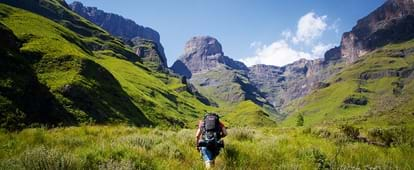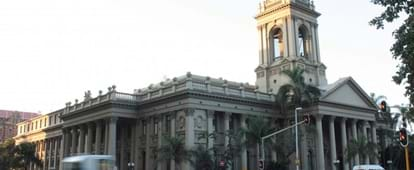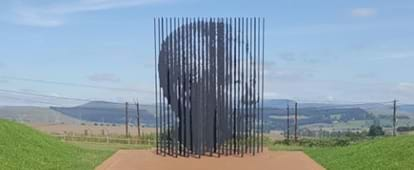By creating an account, I agree to the
Terms of service and Privacy policy
Choose your country and language:
Africa
Americas
Asia Pacific
Europe
KKwaZulu-Natal culture has been moulded by all periods of history. See ancient San artworks at the Rock Art Centre; tour the sites of infamous battles between the Zulus, Dutch and British; enjoy a Zulu reed dance or visiting a local homestead. A holiday to this region of South Africa gives you a fantastic opportunity to get a real insight into the fascinating culture of KwaZulu-Natal.
The KwaZulu-Natal Battlefields area bears testament to the ferocious wars between the British, Boers and mighty Zulu nation that took place here over 120 years ago. Visit the sites and hear the chilling stories of some of the world’s bloodiest battles, including the Battles of Isandlwana and Rorke’s Drift.
The uKhahlamba-Drakensberg Park
The central part of the Drakensberg Mountain Range has been named a World Heritage Site in recognition of its natural magnificence. Massive basalt buttresses and glowing sandstone cliffs reach 3000km in height and stretch for 150km in length.

TThe Royal Village at Ondini
The KwaZulu Cultural Museum near Ulundi showcases iconic symbols of Zulu culture, like the spear and shield, the tall, flat-topped isidkloko headdress and beaded letters. It holds one of the most representative collections of Zulu heritage, reflecting its changes from past to present.
The Durban City Hall was built in the early 1900s in classic neo-Baroque-style architecture. Aside from the city’s municipal chambers, the building houses a public library, auditorium, the Durban Art Gallery and the Natural Science Museum behind its gracious façade.

Humanitarian hero Albert Luthuli played a major part in the liberation struggle against the apartheid regime, heading operations like the Defiance Campaign. Leading the African National Congress (ANC) during South Africa’s most tumultuous political times, Luthuli was awarded a Nobel Peace Prize for his work.
Nelson Mandela Capture Site near Howick
On 5 August 1962, police waved down a car on a lonely country road in KwaZulu-Natal. At the wheel was Nelson Mandela, posing as a chauffeur, and his arrest was the catalyst for a series of trials, culminating in the Rivonia Treason Trial that would ultimately see him spend 27 years in prison. Today this site is marked by an impressive sculpture in the KwaZulu-Natal Midlands.
The Ghandi Monument, Pietermaritzburg
Satyagraha, the philosophy and practice of non-violent or civil resistance, was developed by Mahatma Ghandi. It was a practice he used to help fight racial inequality in South Africa and to pave the way to independence in India. Ghandi’s unique, non-violent resistance efforts have been acknowledged in the form of a bronze statue of the man clad in traditional attire, which stands on Church Street, in the city centre.

SSri Sri Radha Radhanath Temple of Understanding
Centre your being at the Hare Krishna Temple of Understanding in Durban’s Chatsworth suburb, where golden exterior and interior opulence is juxtaposed with the simplicity of beautiful gardens. Don’t leave without sampling a dish of vegetarian delights for which the temple restaurant has become justifiably famous.
This ornate and eye-catching temple stands as a testament to the area’s rich Hindu history and spiritual roots. Built in 1883, it accommodates all forms of traditional Hinduism and is one of the oldest and largest temples in South Africa, with architecture and a central shrine echoing those found in the southern parts of India.
Riverside Soofie Mosque and Mausoleum
South African kramats and mosques tell of the strength of faith in even in the most dire of circumstances. The first Muslims brought to the Cape arrived as either slaves or prisoners, among whom were holy men who kept Islam alive and were buried in shrines known as kramats.
Related articles

